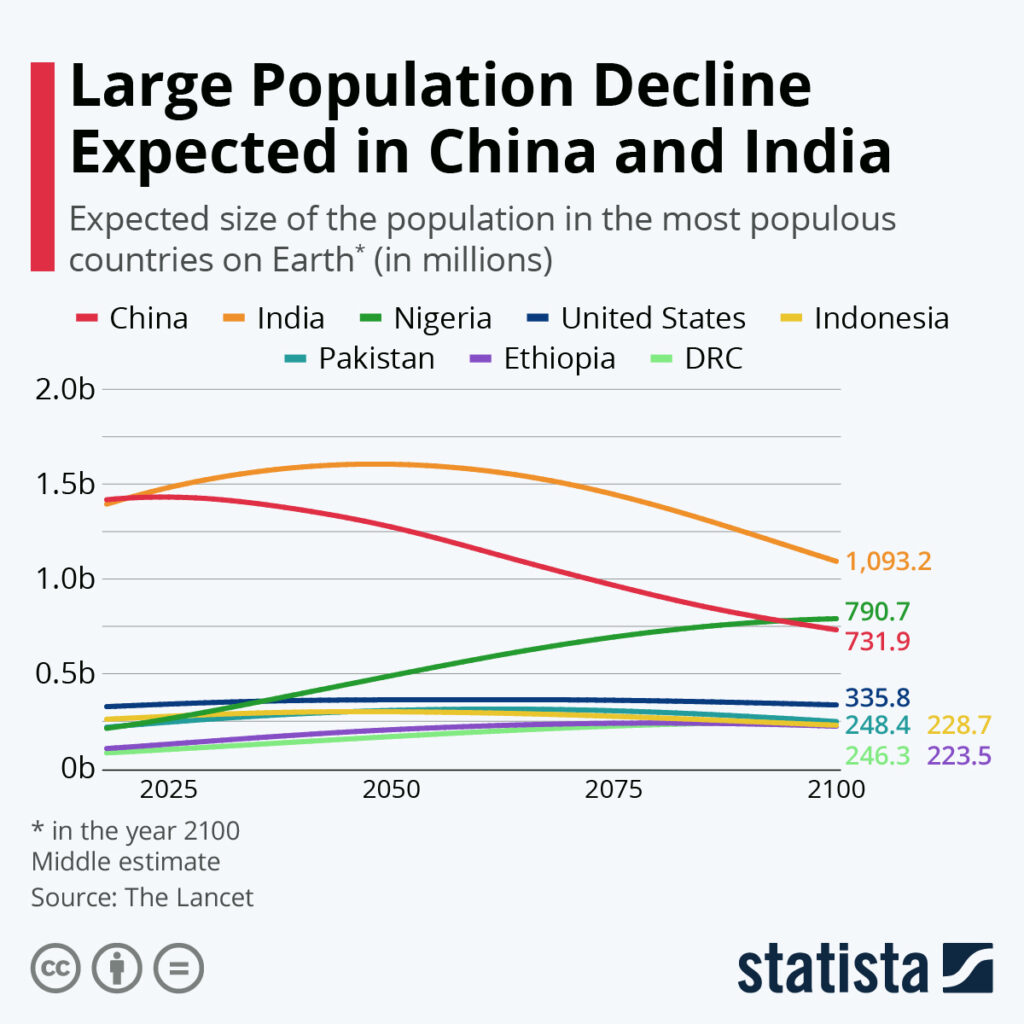Population Decline : An Overview | The curse of Population Decline
A few years ago, countries like India and China were under immense pressure of introducing awareness campaigns to put control their population growth. India was motivating people to have only two children but due to the cultural importance of having a male child, they were not in a condition to implement strict laws. However, campaigns for family planning got successful in the long run, and the average of children per woman is decreasing to new lows.

The situation was a little different in China. They implement a very controversial one-child policy to have control over the population. The resources were under immense pressure and population growth was a big problem.
Currently, the problem is big, but it is the opposite. The world is going to face a population collapse in the upcoming year. Studies have shown that continents like North America and Europe are not showing any solid population growth. A few countries in Africa may have recorded a growth in population but the general trend somehow surprised all analysts.
Population Decline
There are over 500 million people living in Europe, but there are only about 25 million people who are officially classified as “under five years of age”. This means that there are over 100 million people who are not living in Europe. And, of course, there are millions of people who are not counted because they are not residents of Europe.Population Decline
This problem is not just a European problem. The world’s population is growing faster than ever before, but the number of people who are living in developing countries is declining. There are now more people living in developed countries than in developing countries.

This is not a problem that will be solved easily. There are a number of reasons for this problem, but the main one is that people in developed countries have more options than people in developing countries
The term “underpopulation” refers to a situation where the number of people in a given area is below what is needed to sustain that area’s current level of economic activity, social stability, and environmental health. Population growth is a natural phenomenon that takes place in all societies. However, when population growth becomes excessive and out of control, it can lead to situations known as “overpopulation” or “underpopulation.”Population Decline
There are a number of factors that can contribute to an area’s population becoming too small to sustain itself. These include:
– Limited resources – Resources like land, water, and energy are limited, and when they are used up faster than they are being replaced, populations can become too small to support the level of economic activity, and social stability.Population Decline

There are many causes of under-population. A few of the most common are:
-Lack of access to contraception and family planning
-Unsatisfied families
-Lack of education and opportunities
-Economic instability
-War
-Natural disasters
There are many consequences of underpopulation. Some of the most significant include:
1. Limited resources. One of the main consequences of underpopulation is that there is a limited number of resources available. This can be especially problematic in areas where there is a scarcity of resources, such as in rural areas.Population Decline
2. Limited opportunities. Another consequence of underpopulation is that there are fewer opportunities for people to get ahead. This can be a problem because it can limit people’s ability to improve their lives and achieve their goals.
3. Limited access to resources. Another consequence of underpopulation is that it can limit people’s access to resources, such as water and land. This can be a particularly big problem in areas where there is a scarcity of resources.
4. Increased poverty. One of the main consequences

There are a number of ways that governments, businesses, and individuals can work together to address the issue of underpopulated rural areas. One approach is to encourage businesses to locate in or near underpopulated rural areas. This can be done by offering tax breaks or other incentives, or by providing infrastructure and other support.Population Decline Governments can also promote economic development in underpopulated rural areas by providing financial assistance, creating jobs, and developing infrastructure. Individuals can also help to address the issue of underpopulation by donating money or goods to underpopulated rural areas, or by volunteering their time.
Real Also – Newzeeland Beat India : नूज़ीलैण्ड ने भारत को 7 विकेट्स से हराया | Match Highlights




